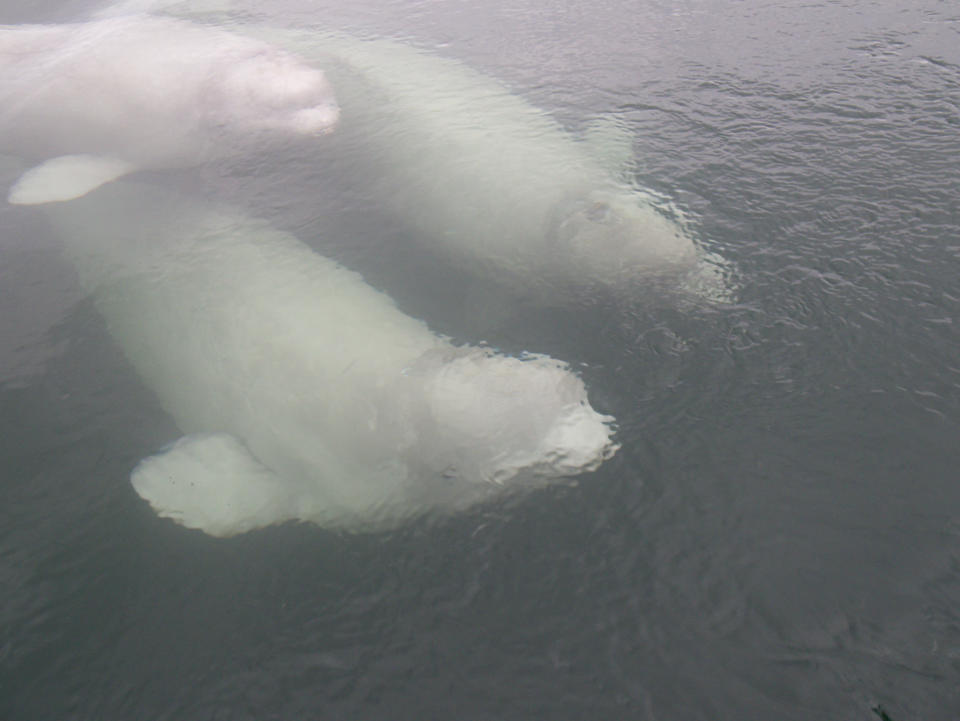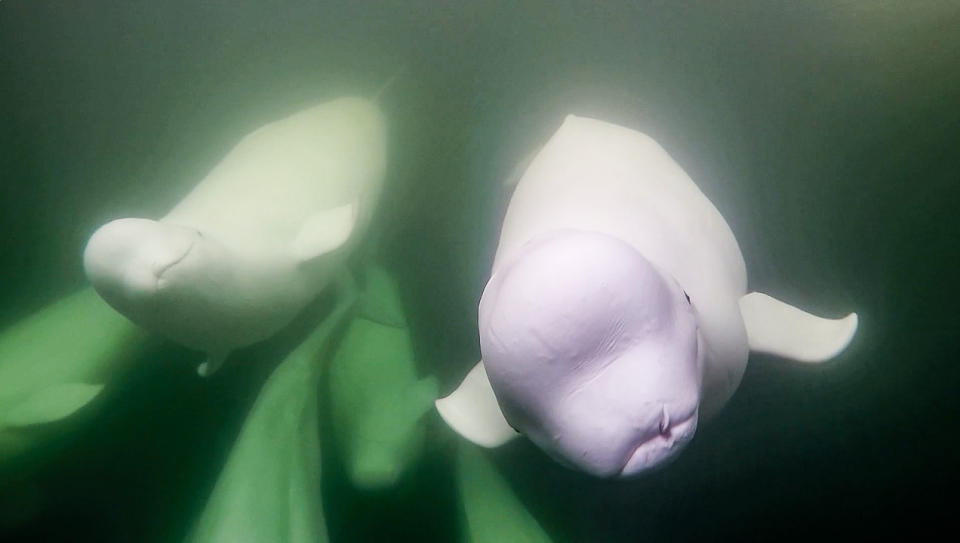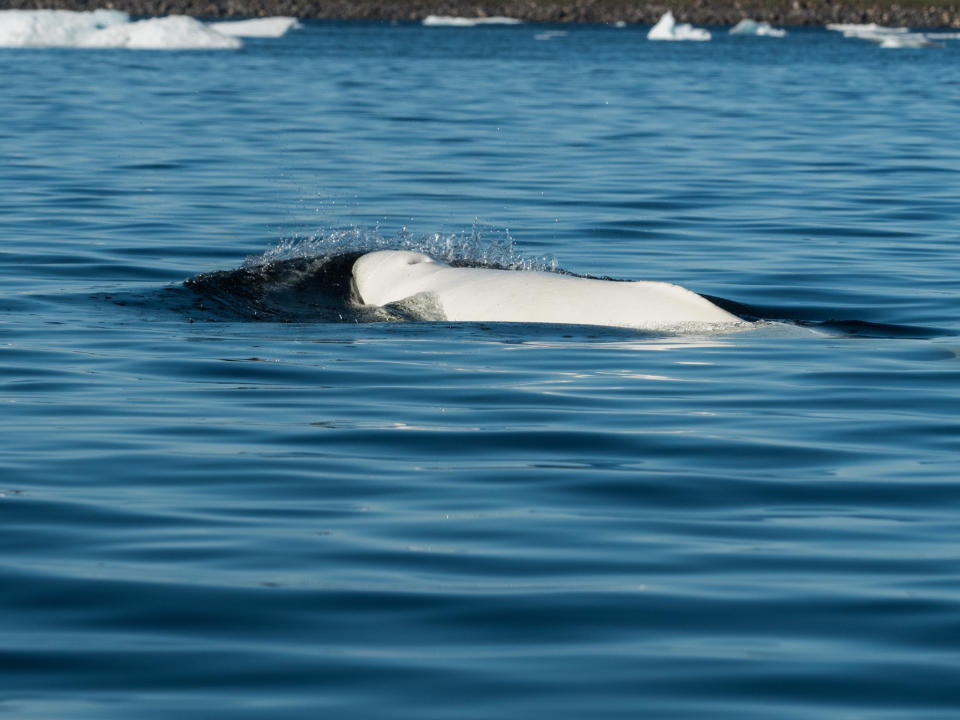Beluga whale cam highlights the importance of Arctic Sea Ice Day
The Arctic is home to many wildlife species, but they continue to be in jeopardy because of the declining sea ice.
That is why Polar Bears International and Explore.org launch the beluga whale live cam every year -- broadcasting the annual migration of 57,000 belugas that traverse to the warm waters of Hudson Bay’s Churchill River estuary to feed, molt, and give birth. Belugas are dependent on sea ice for protection from predators and for feeding.
SEE ALSO: Watch thousands of beluga whales embark on their annual migration live
This year's broadcast takes place on Saturday, July 15, known as Arctic Sea Ice Day. It was created by Polar Bears International to spark actions and conversations about the rapidly melting Arctic ecosystem, why it matters, and how people around the globe can slow this warming trend.
Since launching in 2014, Polar Bears International and Explore.org have brought the journey of belugas to the virtual world every summer with two different views from its boat, Delphi.
"One of the best ways to pave the path to conservation is [to] start with love and connection. By building some sort of personal admiration or appreciation for an animal, you're so much more likely to be able to bridge that to actions to actually help the animal," said Alysa McCall, director of conservation outreach and staff scientist with Polar Bears International, in a recent interview with The Weather Network.

(Bj Kirschhoffer/Polar Bears International)
"We're asking people to talk about it. Talk about the beluga cam, talk about how cool these animals are. Just spread your love for the species. Talk about climate change, talk about your concerns."
What viewers are treated to
The main cameras are set up at the intersection of the Churchill River and the Hudson Bay, an area that sees about two-thirds of the global beluga population travelling through during the summer.
"Since we were already collaborating on multiple polar bear cams in the fall season, we thought it would be amazing to also share the incredible summer beluga whale migration that occurs in the Churchill river estuary," said McCall, in a Q-and-A produced by Polar Bears International.
"Viewers can expect to see and hear dozens (or more) of adult belugas and their calves swimming, nursing, and feeding in the Churchill River estuary. Due to their curious nature, many belugas swim right up to the underwater camera and play in the wake of the boat."

(Madison Stevens/Polar Bears International)
One of the most "interesting elements" of the beluga cam experience is hearing the whales vocalizing and communicating with each other, McCall said.
"The above-water camera captures amazing scenes of the many belugas, and occasionally spots polar bears swimming or walking along the shoreline, as well," said McCall. "During the summer months, polar bears in the area are forced to shore as the sea ice melts, where they wait on land for the sea ice to freeze again in the fall."
What would happen to the beluga whales if all of the Arctic sea ice disappeared?
In the interview with The Weather Network, McCall discussed the dire situation of the melting sea ice in the Arctic. Because of the beluga whales' dependence on the ice, they would be "vastly impacted" if it completely disappeared.
"We already think that if we keep losing sea ice at the rate we are now, by the end of this century, the belugas may have to shift up farther. We might not get them as far south as Churchill, we will see," said McCall. "They really are an ice-dependent species, similar to polar bears."
She noted there are still about 200,000 beluga whales left, but their ecosystem is "shifting quite rapidly."
"So, they're doing well in a lot of areas, but the more that the Arctic warms and opens up, the more those ice patterns change [and] the whales will have to adjust," said McCall.
She said the issue is further helped when people share the conversation on and off social media, noting the Polar Bears International website offers some tips on that approach.
"It's really these conversations we have in our societies that shift what is acceptable to us, and it should no longer be acceptable to us that we're burning fossil fuels for energy," said McCall. "We think people will be more inspired to kind of get onboard and help us make the changes we need to see, which includes cleaner energies."
How to optimize the beluga whale-watching experience online
According to McCall, for optimal viewing of the whales on the website, the boat operates two hours on each side of the high tide. Keep the tide chart handy and tune in for the best live-viewing hours each day. You can view the tide chart here.
The beluga whale live cam can be found here.

(Madison-Stevens/Polar Bears International)
"Make sure to turn up your speakers, in addition to watching the visuals, to hear the amazing underwater acoustics of the beluga’s world," said McCall.
Also of note is that PBI has collaborated with the Assiniboine Park Zoo for the past six years on a citizen science project that relies on footage from the beluga cam. The collaborative research project, Beluga Bits, gives viewers the opportunity to actively participate in the classification and identification of belugas.
WATCH: Beluga whales make yearly trip as ice melts
With files from Cheryl Santa Maria, a digital reporter at The Weather Network.
Thumbnail courtesy of Madison Stevens/Polar Bears International.
Follow Nathan Howes on Twitter.

